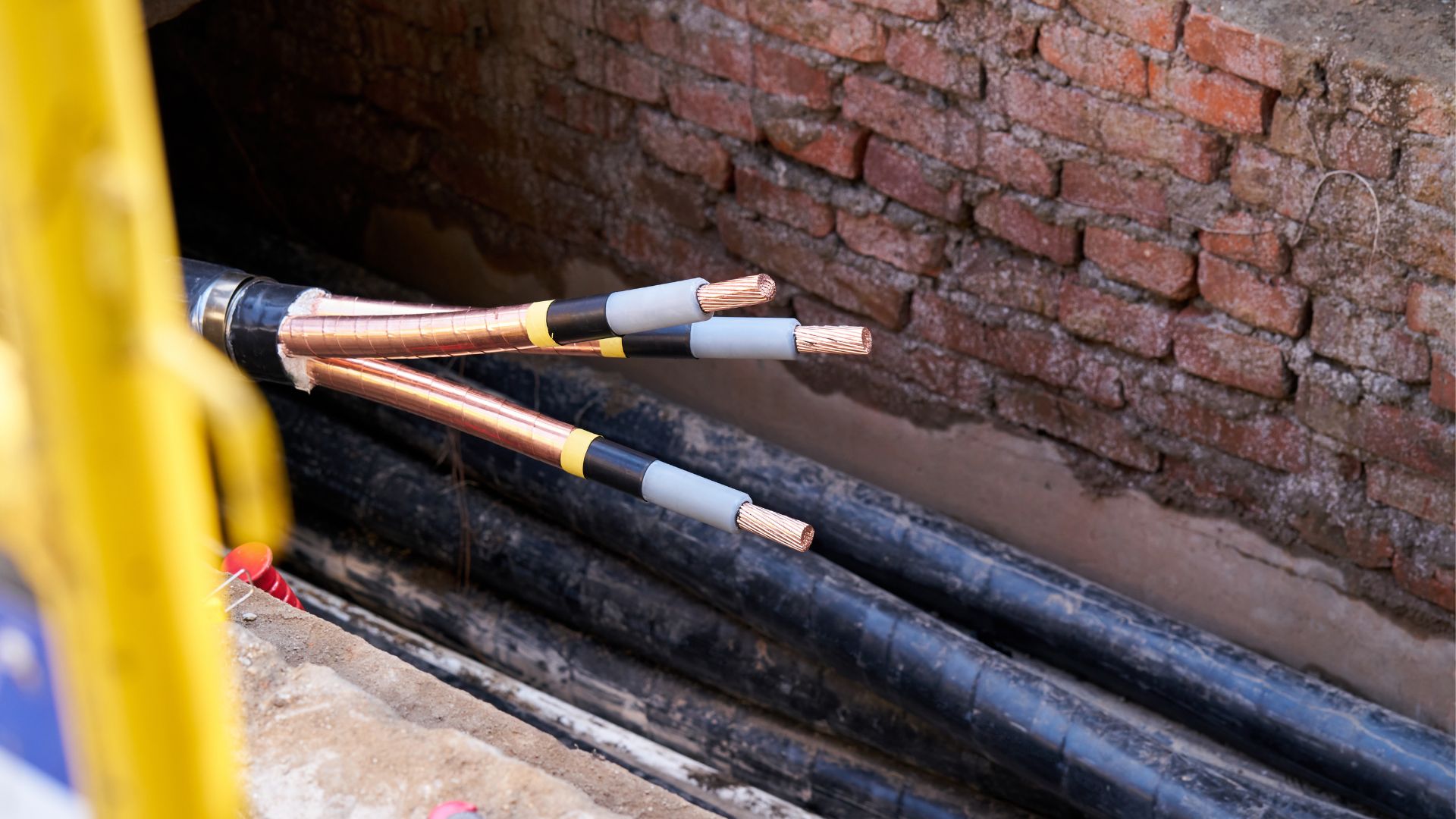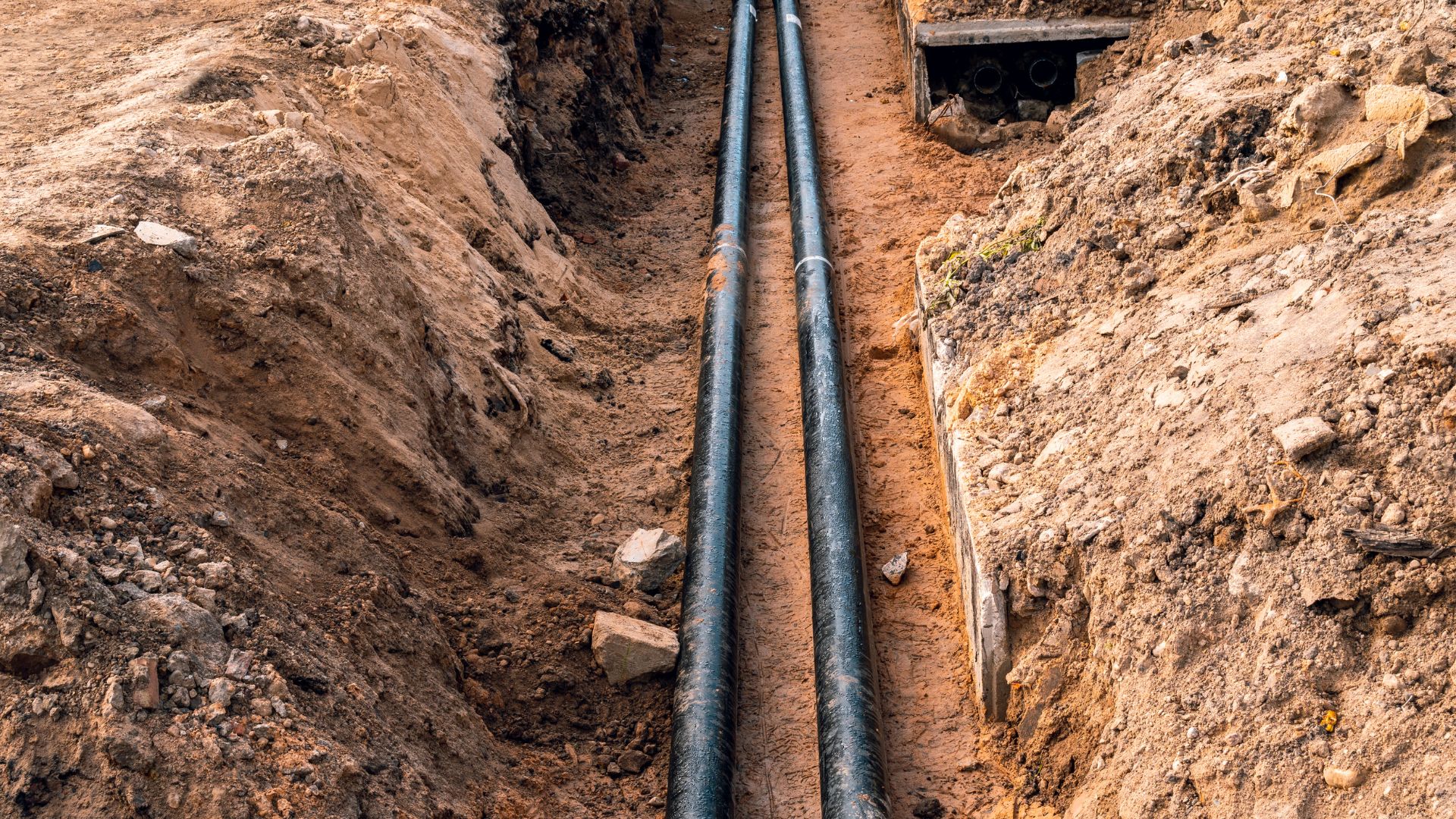The Benefits of Switching to Underground Electrical Power
Say goodbye to power outages and unsightly poles. Underground electrical power offers safety, reliability, and aesthetic appeal. Learn how it can transform your community.
Four separate incidents involving contact with overhead power lines resulted in serious injury and tragedy in the first half of 2023. These incidents highlight a concerning trend, but a solution is on the rise.
The underground cable market is projected to grow significantly by 9.4% annually between 2024 and 2031. This shift towards burying power lines below ground represents a move towards a safer, more reliable future for workers and communities alike.
Let’s explore the advantages of underground power lines and why they’re becoming the preferred choice.
What Are Underground Power Lines?
Underground power lines are essential components of modern electrical systems, offering a reliable and safe power supply.
Definition and Components
Underground power lines consist of underground cables and buried power lines that form part of the underground electrical systems. Unlike overhead lines, these lines can be installed beneath your property, reducing the need for power poles.
Underground cables and underground electric infrastructure involve electrical cables and underground utilities that distribute electric power to your home.

Differences from Overhead Lines
Underground power installation is often more expensive than overhead power systems. Yet, the benefits of underground power lines include being less susceptible to severe weather and high winds, which can cause power outages in overhead power lines.
Underground systems are more reliable and have a lower environmental impact. Overhead power poles require regular maintenance and are easily damaged.
Underground lines can also enhance property values and are much more aesthetically pleasing. Western Power and local government initiatives, like the underground power program, aim to replace overhead electrical infrastructure with underground service lines.
Why Consider Burying Your Power Lines?
Burying power lines offers several advantages that improve safety, reliability, and aesthetics.
Enhanced Safety
Installing underground service lines reduces hazards associated with overhead electrical infrastructure. Underground power cables are protected from external factors like falling branches, providing reliable, safe power.
A Level 2 electrician can ensure electrical wiring is safely installed, minimising risks common with overhead power poles.
Improved Reliability During Storms
An underground electrical system offers enhanced reliability during adverse weather conditions. Overhead underground systems are less susceptible to damage from storms.
The benefits of underground power include fewer outages. Underground lines within the distribution system ensure a stable power distribution network. Transmission distribution is more secure, offering stability compared to overhead lines.
Aesthetic Improvements to Properties
Replacing private power poles with underground electric infrastructure can significantly increase property value. Underground power projects enhance the appearance of your house and surroundings.
Cables can be hidden, offering a cleaner look. The costs and benefits of improved aesthetics can also outweigh more than financial considerations. Your project’s scheduled start can be planned with a Level 2 ASP for optimal results.
Underground electrical services and power installation by a level 2 electrician can ensure a seamless transition. Request free consultations to explore how this underground system can help enhance your project.
How Does the Installation Process Work?
Installing underground power lines involves several key steps to ensure a reliable and efficient system.

Planning and Permits
The process begins with planning the underground power project. This involves obtaining necessary permits from local authorities and arranging inspections. Replacing overhead power poles with underground service lines requires careful coordination.
Excavation and Installation
Once permits are secured, excavation begins. Trenches are dug to lay the underground power cable. An underground electrician oversees this phase, ensuring cables are properly installed. Distribution lines are connected to the main power system, providing reliable, safe power.
Connection and Testing
After installation, the underground overhead power system is connected to the existing infrastructure. Underground service lines are linked to private power poles if necessary. The system is tested to ensure it functions more than adequately, delivering power consistently.
Inspections and Finalisation
Final inspections ensure compliance with regulations. Underground power lines require rigorous checks to confirm their safety and durability. An underground overhead setup is checked for efficiency, ensuring it performs better than overhead lines.
Challenges and Considerations
Challenges include dealing with unforeseen obstacles during excavation and ensuring all components meet standards. Proper planning can more effectively address these issues, making systems more dependable than underground alternatives.
Are There Any Environmental Benefits?
Underground power lines offer several environmental benefits that favour wildlife and ecosystem preservation.
Reduced Impact on Wildlife
Eliminating overhead power poles and lines reduces the risk to birds and other wildlife that might collide with them. Underground service lines also minimise habitat disruption, allowing animals to move freely without obstacles.
Ecosystem Preservation
The installation of underground power cables helps preserve natural landscapes. Unlike overhead lines, which require tree trimming and deforestation, underground power projects maintain the integrity of forests and green spaces. This approach promotes healthier ecosystems and biodiversity.
Aesthetic and Noise Reduction
Underground systems reduce visual pollution, allowing natural beauty to flourish. Additionally, they generate less noise compared to the buzzing often associated with overhead lines, creating a more serene environment.
What Are the Costs Involved?
Switching to underground power lines involves several costs but offers long-term benefits.
Initial Costs
The upfront expenses include planning, excavation, and installation of underground power cables, which are generally higher than overhead lines. These costs cover materials, labour, and necessary permits.
Long-Term Savings
Despite the initial investment, underground systems can lead to significant savings over time. Maintenance costs are lower due to reduced exposure to weather-related damage and less frequent repairs compared to overhead power poles.
Property Value Increase
Properties with underground service lines often see an increase in value. The aesthetic appeal and reliable power supply make such properties more attractive to buyers.
How Reliable Are Underground Power Lines?
Underground power lines are highly reliable, offering significant advantages over traditional overhead systems.
Maintenance Needs
Underground lines require less maintenance than overhead power poles. Being buried, they are protected from environmental factors like wind and tree branches, reducing the need for frequent repairs.
Weather Resistance
These lines are less susceptible to weather-related disruptions, such as storms or high winds. Unlike overhead lines, which can be damaged by severe weather, underground systems provide a more stable power supply.
Overall Reliability
Underground power cables’ durability ensures consistent performance, making them a dependable choice for residential and commercial properties. This reliability translates to fewer outages and improved service continuity.
What Are the Potential Drawbacks?
Underground power lines, while beneficial, do have some drawbacks.
Initial Installation Expense
The upfront cost of installing underground power cables is significantly higher than that of overhead lines. This includes excavation, materials, and labour, making it a substantial investment.
Repair Complexities
Locating and repairing faults in underground systems can be more challenging and time-consuming compared to overhead power poles. Accessing buried cables requires specialised equipment and can disrupt surrounding areas.
Limited Flexibility
Once installed, underground lines are less flexible for modifications or expansions, as any changes require excavation.
Despite these drawbacks, the long-term benefits often outweigh the initial challenges, providing a stable and aesthetically pleasing solution.
How to Get Started with the Transition
To begin transitioning to underground power lines, homeowners should follow these steps:
- Consult Professionals: Contact a level 2 electrician to assess your property and discuss potential benefits and challenges.
- Planning and Permits: Work with local authorities to obtain necessary permits and plan the installation.
- Cost Estimation: Get quotes for excavation, materials, and labour to understand the financial commitment.
- Coordinate with Utilities: Ensure alignment with power companies for a smooth transition.
- Schedule Installation: Arrange a timeline with professionals for the installation process.
Professional guidance is crucial for a successful transition.
Power Up with Confidence
The decision to switch to underground electrical power offers numerous advantages, from enhanced safety and property value to reduced environmental impact. By burying power lines, homeowners can enjoy a more aesthetically pleasing landscape, increased protection from severe weather, and greater peace of mind.
Considering the complexities involved in underground service line installation, it is essential to partner with experienced professionals. Sydney Level 2 Electricians specialises in this area and can guide you through the entire process. Their expertise ensures a seamless transition to underground power while prioritising safety and efficiency. Reach out to us today!